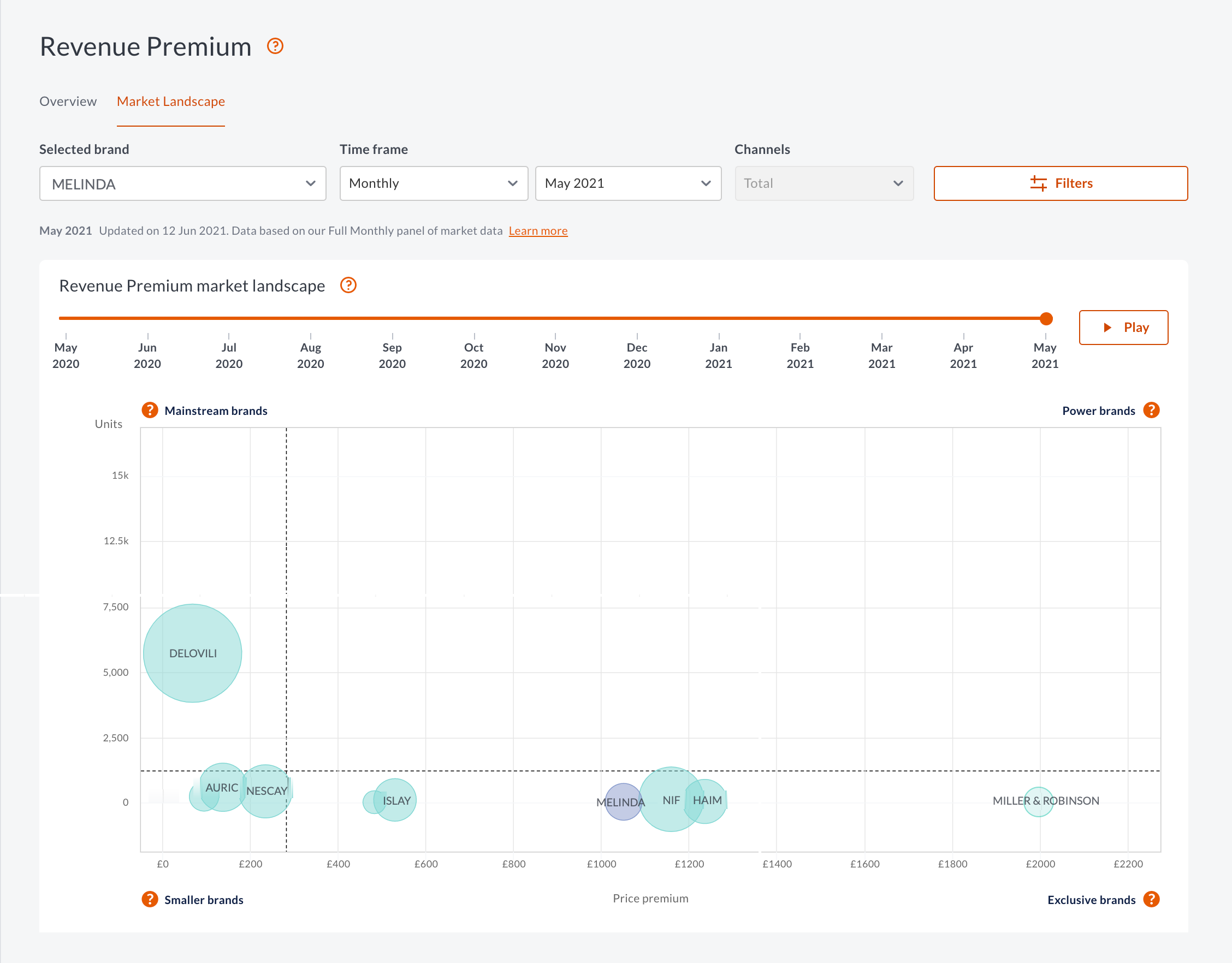Revenue Premium Market Landscape
See the market's top brands, positioned on price and sales volume.
Market Landscape
Market Landscape shows the top brands in the chosen market. Their relative positioning is based on price premium and sales volume.
Price premium is the total extra margin attributable to the strength of the brand's perception in the market.
Units shows the total models sold by the brand within the chosen time period.
Dashed lines on the chart represent the average units and price premium across the brands that cover 95% of unit sales in the market (within the selected time period). This helps you understand your brand’s position in the market.
Across any product range you'll likely see variable trade-offs between price premium and sales volume. That’s why each bubble represents the Revenue Premium evened out for an entire product portfolio in the market.
Hover over any bubble for totals of product units sold, price premium achieved, and Revenue Premium.
Understanding brand positioning
The relative performance of price premium and sales volume places a brand into one of four categories.
Mainstream brandsBrands with a solid reputation and attractive price points can build a mainstream customer base in their market category. They are familiar household names and can maintain their position with consistently reliable products and a high-volume, low-margin sales model. |
Power brandsBrands with both a strong reputation and a wide appeal become highly profitable. This position protects price premium while growing sales to mainstream levels. Power brands can enter neighbouring market categories more easily thanks to the halo effect of their brand. |
Smaller brandsBrands with smaller sales volumes and margins have the best opportunity to grow. A focus on brand awareness and communicating their strengths can sharpen positioning, allowing them to break away from competing on price and establish a more premium position. |
Exclusive brandsBrands with a reputation for quality, design, innovation or service can command higher prices, even for comparable products. They create desire in high-end consumers. Sales volume may be lower than the mainstream, but premium positioning justifies higher margins. |

